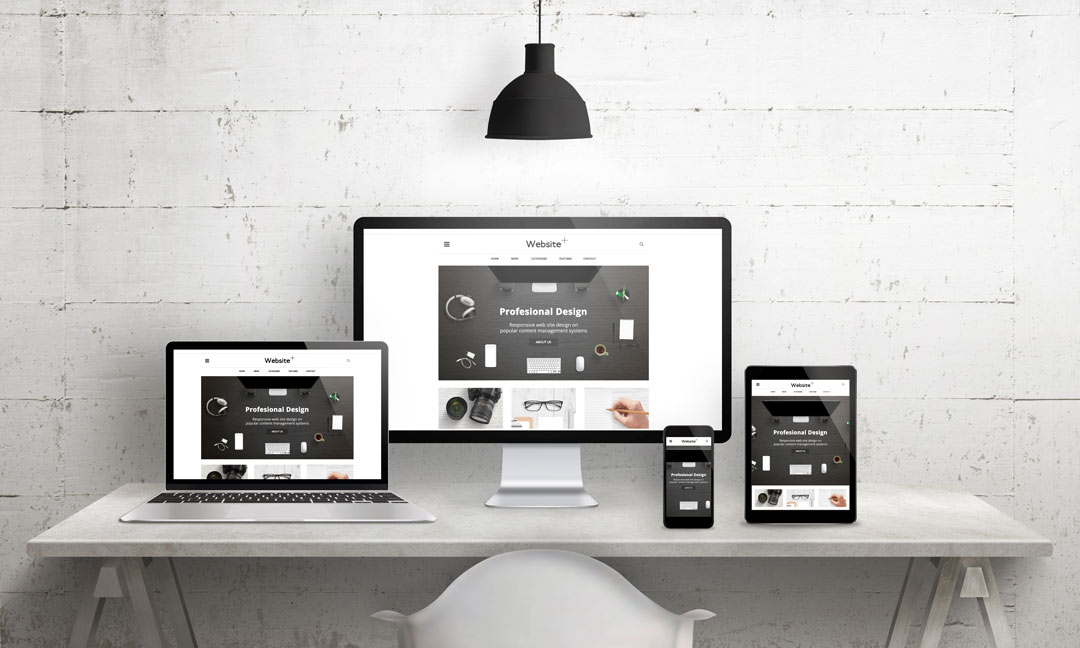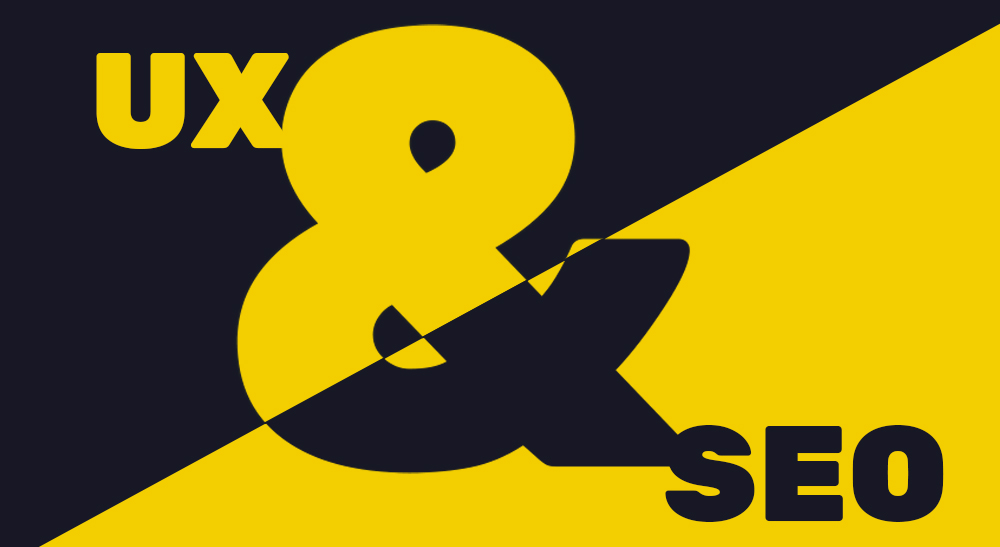While in the past, SEO and UX were seen as separate entities, locked in an eternal struggle of who makes a strong website, today’s digital landscape is much different.
On one side, there are user-experience gurus, who put the ease and simplicity of a website above all else. On the other side, you have search engine optimization experts who know that behind-the-scenes operations and content marketing matter just as much as the frontend aesthetic.
So who’s right – is UX or SEO more important? Well, the answer may surprise you.

Share this Post
The Evolution of SEO
Back in the Wild West days of the Internet, the pioneers of SEO did whatever they could to manipulate search results to get their website to the top of the page – mostly what we call “black hat” techniques in 2019 – and Google didn’t do much to stop them. SEOs stuffed websites with keywords in a font color that matched the background of the website, copy and pasted spammy duplicate content and (perhaps restricted by the coding capabilities of the day) didn’t care how their brand came off online. As long as they were first, they considered themselves successful.
But, as Google developed a more complex algorithms like PageRank, the industry and the professionals that made it up, evolved with it. Early-day SEOs always considered spammy tactics to be the way to go – but in recent years, we’ve learned that helping businesses’ websites actually do a better job at reaching, attracting, retaining and converting their main demographics was becoming more and more crucial as to how Google would rank your site.
Today, search engines take into account hundreds of factors to determine whether your website is the appropriate result for any given query. That’s where UX comes into play.
What is UX?
UX + SEO: Working in Conjunction
Just as brand marketing and SEO are converging under the overarching umbrella of digital marketing, UX is becoming a major part of what makes a website both highly functional and highly visible, as well. Both practices are concerned with how content is presented, distributed and built, while one is more concerned with the visual and functionality of a website (UX) and the other (SEO) is more concerned with the technical makeup and keyword targeting of a website.
When it comes down to it, both practices need to work in conjunction with one another to provide both website visitors and search engine crawlers with something that they can easily understand. The most important thing you can remember is that both Google and users have the same goal: to consume meaningful content that informs. It’s your job to provide them with that information in an easy-to-understand way.
What Does Google Say About UX?
This is where the surprise comes in – Google says that UX/UI alone won’t play a critical factor in your search rankings. According to a recently released Webmaster Central Office Chat, a Google Webmaster states:
“How big of a factor is UX in SEO? Only for search ranking, user experience (in terms of how the design is) matters, but I wouldn’t say too much. As long as you know it’s good enough for most people, that’s fine.
For example, let’s take page speed. If it loads under a second there are five competitor websites that load under a second, then I wouldn’t say the fastest loading website has a larger advantage. Because all websites are loading pretty fast so that won’t provide a big ranking boost for that particular instance. In a similar way, I wouldn’t put too much search ranking SEO weight under usability. It’s definitely important but it only comes after the main things like ranking, people linking to you and so on.”
![]()
Anyone serving a smaller niche probably knows a competitor or two who hasn’t updated their website since 2003. Yet, somehow they’re still competitive with your new, attractive site in search results. Well, their edge may lie in SEO elements like content markup, lighter resources that produce better delivery and the advantage of an old domain name. But, let’s not downplay the fact that UX contributes to good SEO, thanks to the supporting metrics that UX contributes to.
For example, without good UX, users are more likely to bounce from your page, leaving you with a higher bounce rate, lower time on page and decreased return visitors. All factors that contribute to a search-friendly website.
Ultimately, both sides set out to improve a website layout so that the end users can get the information they need.
UX + SEO Best Practices and Ideas
Which would be styled to look like this:

Which would be formatted to look like:

So, you see that the h2 tag is the more prominent of the two in terms of design, yet you’re still giving more search-engine weight to the target keyword, "Minneapolis SEO."
Making an Easy Path to Purchase
Whether you want people to order food online or purchase tickets to an event, both SEOs and UXers should be concerned with creating the easiest path to conversion they possibly can. This means developing content with a singular intent and linking from that page to more conversion friendly-pages as you go along.
For example, you could build a high-traffic blog post, based around the keyword “SEO Copywriting Guide.” The user enters the website via a search engine, landing on this page, and consumes the article. Within the article, you’ve placed internal links to places in your website, specifically a CTA at the bottom, leading to your SEO Services page. The user clicks into this page, is enticed by your service offerings, and then clicks a contact button which gets them to fill out a form. You’ve successfully captured a lead using both keyword targeting and smart web design.
Mobile-Friendly Design
Google is moving the industry forward, once again. One of the biggest things to happen in the website world this year is the fact that Google is moving to mobile-first indexing starting July 1. That means, while UXers have been playing in the mobile space for years, it’s time for SEOs to play catch up.
From Google, “Since the majority of users now access Google Search with a mobile device, Googlebot primarily crawls and indexes pages with the smartphone agent going forward.” This means SEO consultants will need to work even more closely with UX professionals to build the best mobile-first experience possible.
A/B Testing
Before your UX and SEO teams get into a brawl over what’s working and what’s not, there is a way to settle who’s right. After running a website audit, perhaps the most important (and often overlooked) aspect of managing a top-performing website is conducting regular A/B testing. Whether you’re redesigning a new website, testing out new search engine copy, trying out a new title format or optimizing for keywords, you won’t know what works—and what doesn’t—until you’ve conducted tests. Check out the software options below to start conducting A/B tests on your website:
In Conclusion
Whether you run a financial advisor website, sell sporting goods, music equipment or anything else, it’s never been more apparent that companies need to utilize both SEO and UX in their digital marketing strategy. This supports a strong structure from which both human users and crawler bots can access and read content, feeding off one another to make your digital assets more popular.
To please Google, you must please the user – to please the user (or at least get your content in front of them), you must please Google. And when you combine fantastic web design and smart SEO, you’ll end up with a website that meets the standards of both search engines and users, providing them with the information they need to have a meaningful interaction with your brand online.
We put the UX in Luxury Web Design
A proper website design communicates your message through clear visuals, compelling copy and proper user experience. Whether you need a makeover, or something brand new, our team can supercharge your brand.
Are you interested in finding out what it's like to work with an SEO / Web Design Agency? Click the button below to receive a custom, 100%-free website audit. We'll provide you with actionable ideas on improving your digital presence.


